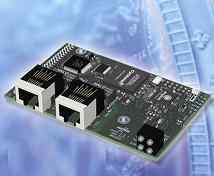CANopen_Master_API常见问题
型号: PXF0869
FAQs: Software/Tools > CANopen Master API常见问题
[Number of FAQs 13]
1. The CANopen Master API Version 2.18 does not run with the new VCI Version 2. Why?
2. Why do I get the COP_k_NMT_HEARTBEATERR event?
3. How can I use more than 10 PDOs for a CANopen device?
4. What are the differences between CANopen Master API V V2.21 and Version 4.0.10?
Version 2.21 of the CANopen Master API only supports the versions 2.0 to 2.14 (inclusively) of the VCI driver. To use newer versions of the VCI driver, it is necessary to install at least version 4.0.10 of the CANopen Master API, which supports all versions of the VCI V2. |
5. What are the differences between CANopen Master API V V4.0.10 and Version 4.1?
|
6. What are the differences between CANopen Master API V V4.1 and Version 5.0?
|
7. What are the differences between CANopen Master API V5.0 and V5.1?
|
8. Which information is important for the processing of a CANopen Master API support request?
Please tell us the following information:
|
9. Why does the function COP_GetNodeState return the value 255 (COP_k_NS_UNKNOWN) for some CAN moduls?
| The function COP_GetNodeState() returns the current status of slave 节点. This status is not assigned to a special slave object dictionary entry, but it is created according to the observation of the slave communication; especially using the Heartbeat- or NodeGuarding- messages, but also using Bootup and Emergency. COP_k_NS_UNKNOWN as standard value will be returned, if the CAN node status could not be detected in this way, e.g. because a CAN node did not send Heartbeat yet. |
10. Which CANopen Master API versions support the VCI V2.18?
|
11. What are the differences between CANopen Master API V5.1 and V5.2?
|
12. Is it possible to access a CAN interface board with a „CANopen Master API“ application and a „VCI“ application (e.g: Minimon) simultaneously?
| No, because the „CANopen Master API“ and „VCI“ download the different firmware into the CAN interface board. |
13. What are the differences between CANopen Master API V5.2 and V6.0?
|
url: http://www.51lm.cn/p/templates/cn/show.php?cid=314&aid=869


